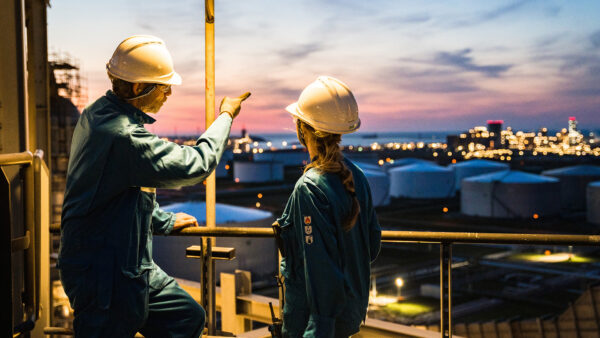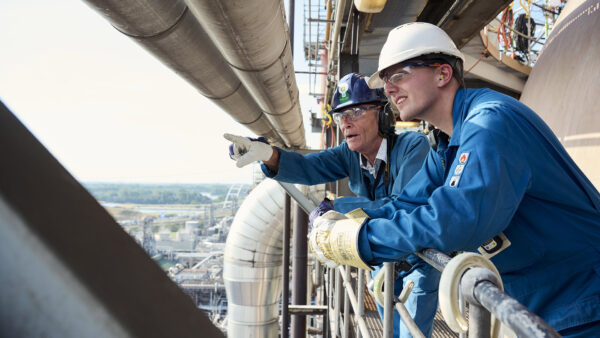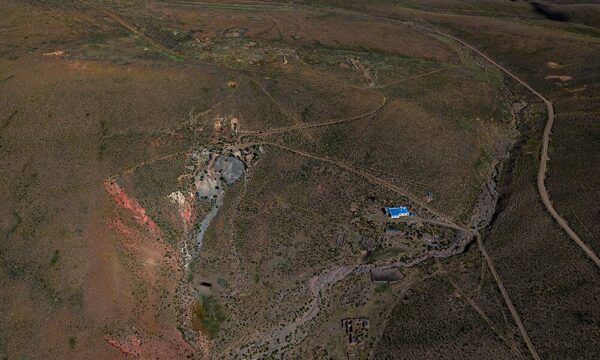Infrastructure is key to project development
Given the simple nature of the mining operations, infrastructure is key to the project’s
execution. Minim Martap’s infrastructure solution is twofold: it assumes an upgrade
to the existing railway lines that connect the project to the port of Douala and building
the transhipment operation at the port of Douala to bring the saleable product to
the international bauxite market.
Rail infrastructure
The company has undertaken detailed studies that analyse the state of the existing
railway and its traffic, and align the project’s development timeline and its production
ramp-up with available capacity on the line. Cameroon’s rail network consists of two
main parts: Transcam 1, which is 262km long and connects Douala with Yaoundé; and
Transcam 2, which extends for 626km and connects Yaoundé with Ngaoundéré. The network
is predominantly a narrow-gauge, single-track rail. It is run by Camrail as a concession
granted by the government to operate, manage and maintain the railway network. The
government retains ownership of the rail infrastructure, including stations and tracks,
and is mainly responsible for new infrastructure investments. The freight tariffs
are not regulated and are set by Camrail.
Over the years, the network, especially the Transcam 1 section, has undergone significant
refurbishment and renovation. In particular, as part of the five-year rail infrastructure
modernisation programme, by 2021, Camrail renovated 68 rail bridges across the system.
This work was part of a larger programme supported by the World Bank that saw the
refurbishment of 330km and reinforcement of 500km of tracks. In October 2021, Canyon
announced that the report from Camrail confirmed that all bridges on the line are
rated to a 20-tonne axle load and are suitable for the planned tonnage from Minim
Martap. More recently, in 2022, it was reported that the EU had agreed to provide
an additional €123m as part of the overall funding of €243m to upgrade the 330km Belabo-Ngaoundere
section of Transcam 2. With Transcam 1 having been largely modernised and works on
Transcam 2 progressing, it is expected that, by 2030, Cameroon’s total railway network
will be able to accommodate longer trains with higher payload per axle.
The rail modernisation should allow Canyon to implement a gradual ramp-up of the Minim
Martap project from the initial BFS-based production of up to 3.5Mtpa of bauxite to
a nameplate operating capacity of 6.4Mtpa. As part of the BFS, Vecturis, a well-known,
West Africa-focused rail engineering and operations consultancy, provided detailed
analysis of the project’s rail access and capacity requirements. Apart from the required
fixed infrastructure upgrades, along the Transcam 1 and Transcam 2 sections of the
network, it concluded that in total 24 stations will need to have their passing loops
extended to a useful length of 1,200m. We understand that these upgrades are part
of the overall railway refurbishment and will not require investments from Canyon
unless the company chooses to invest certain funds to fast track the development of
the project through funding some of the rail works itself. It is expected that, at
the initial stage, the project will use two trains per day consisting of up to 70
wagons, each loaded at up to 17t per axle, or c 75t of bauxite per wagon. Once the
full railway upgrade is completed, at a steady state of c 6.4Mtpa, another train will
be added with the overall payloads increasing to 20t/axle, or 93t per wagon.
In 2020, Canyon signed a memorandum of understanding with Camrail, which provided
a pathway and timeline for the completion of binding commercial rail access and rail
haulage agreements. Further, in April 2022, the company executed a heads of terms
agreement with Camrail to establish the negotiation process and agree on the commercial
terms of the contract. We understand that these commercial agreements are expected
to be reached in H125 as part of the ongoing DFS work.
At the beginning of February, the company announced that the government of Cameroon
had approved the location of the inland rail facility and allocated 105 hectares of
land to be used for the associated infrastructure. The IRF is situated near the existing
Makor train station and will include a new rail siding suitable for 1,200m-long trains.
It will operate as a satellite hub supporting the train, road haulage and road maintenance
activities. In the BFS, the capital cost of the IRF was estimated at US$18.5m.
Port infrastructure
The saleable product from the Minim Martap project will be transported by rail to
the unloading operation at a new dedicated area of the port of Douala. Based on the
2022 BFS, the port solution for the project was contingent on the completion of the
extension of the Douala port on the Bonaberi side of the Wouri River. A new development
would provide the platform for a mineral terminal with a dedicated area for train
unloading, stockpiling and loading of the bauxite onto barges and then to capesize
vessels. The transhipment operation would consist of a fleet of barges, tugboats and
an offshore floating vessel, and represents a common way of moving bulk commodities,
such as iron ore and bauxite, to ocean-going vessels in areas with limited water depth.
In 2022, the port of Douala entered into an agreement with KTH Engineering (KTH) to
build a new 42-hectare bulk terminal and a 900m dock on the right bank of the Wouri
River at the Douala-Bonaberi port. According to press reports, after significant delays,
in mid-2024, KTH secured a €142m loan with the African Export-Import Bank to fund
construction of the first phase of the new terminal, with a project company providing
an additional €60m in financing. The terminal project is expected to be completed
within 60 months. The 2022 BFS assumed that Canyon would be one of the anchor tenants
of the new development. However, delays in obtaining funding suggest there is a high
risk that the new terminal will not be completed on time for the project and, in addition,
may not offer the company the required capacity and the most convenient location.
Separately, in October 2024, it was reported that ARISE Integrated Industrial Platforms
(ARISE IIP) signed a partnership agreement with the Port Authority of Douala to build
the Dibamba industrial port zone. It is expected to be an integrated industrial ecosystem
covering 517 hectares of land and will include a multimodal logistics hub and an integrated
industrial park. Founded by Gagan Gupta, ARISE IIP is part of the ARISE group and
has experience in developing similar industrial zones in other African countries such
as Gabon, Togo and Benin. The new port development will be located along the banks
of the Dibamba River and could represent an attractive logistical solution for Canyon
using the same design as the project’s proposed transhipment operation. We understand
that the terminal’s construction time should fit within the project’s overall production
ramp-up timeframe and that it is now the company’s preferred port solution for the
project.































